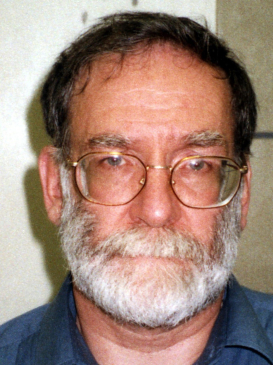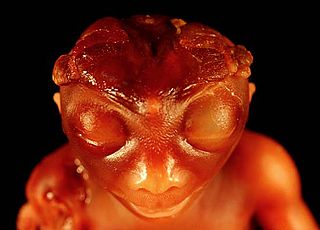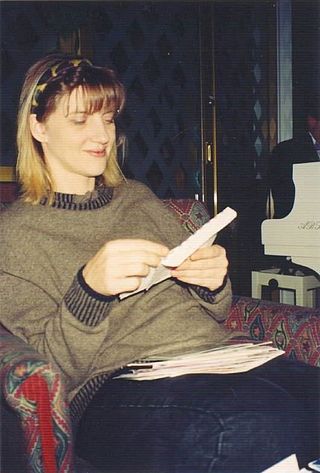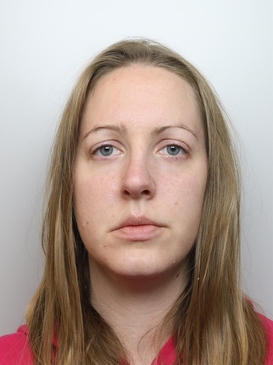
Harold Frederick Shipman, known to acquaintances as Fred Shipman, was an English doctor in general practice and serial killer. He is considered to be one of the most prolific serial killers in modern history, with an estimated 284 victims over a period of roughly 30 years. On 31 January 2000, Shipman was convicted of murdering fifteen patients under his care. He was sentenced to life imprisonment with a whole life order. Shipman hanged himself in his cell at HM Prison Wakefield, West Yorkshire, on 13 January 2004, on the day before his 58th birthday.

Life support comprises the treatments and techniques performed in an emergency in order to support life after the failure of one or more vital organs. Healthcare providers and emergency medical technicians are generally certified to perform basic and advanced life support procedures; however, basic life support is sometimes provided at the scene of an emergency by family members or bystanders before emergency services arrive. In the case of cardiac injuries, cardiopulmonary resuscitation is initiated by bystanders or family members 25% of the time. Basic life support techniques, such as performing CPR on a victim of cardiac arrest, can double or even triple that patient's chance of survival. Other types of basic life support include relief from choking, staunching of bleeding by direct compression and elevation above the heart, first aid, and the use of an automated external defibrillator.
Sir Samuel Roy Meadow is a British retired paediatrician infamous for facilitating several wrongful convictions of mothers for murdering their babies. He was awarded the Donald Paterson prize of the British Paediatric Association in 1968 for a study of the effects on parents of having a child in hospital. In 1977, he published an academic paper describing a phenomenon dubbed Munchausen Syndrome by Proxy (MSbP). In 1980 he was awarded a professorial chair in paediatrics at St James's University Hospital, Leeds, and in 1998, he was knighted for services to child health.

Stephanie Keene, better known by the pseudonym Baby K, was an anencephalic baby who became the center of a major American court case and a debate among bioethicists.
Anthony David Bland was a supporter of Liverpool injured in the Hillsborough disaster. He suffered severe brain damage that left him in a persistent vegetative state as a consequence of which the hospital, with the support of his parents, applied for a court order allowing him to "die with dignity". As a result, he became the first patient in English legal history to be allowed to die by the courts through the withdrawal of life-prolonging treatment including food and water for the injuries.

Memorial Medical Center in New Orleans, Louisiana was heavily damaged when Hurricane Katrina struck the Gulf Coast on August 29, 2005. In the aftermath of the storm, while the building had no electricity and went through catastrophic flooding after the levees failed, Dr. Anna Pou, along with other doctors and nurses, attempted to continue caring for patients. On Wednesday, August 31, United States Health and Human Services Secretary Mike Leavitt reassured the public that 2,500 patients would be evacuated from hospitals in Orleans Parish, although it wasn't clear at first where they would be moved to.
New York State Department of Health Code, Section 405, also known as the Libby Zion Law, is a regulation that limits the amount of resident physicians' work in New York State hospitals to roughly 80 hours per week. The law was named after Libby Zion, the daughter of author Sidney Zion, who died in 1984 at the age of 18. Sidney blamed Libby's death on overworked resident physicians and intern physicians. In July 2003, the Accreditation Council for Graduate Medical Education adopted similar regulations for all accredited medical training institutions in the United States.

The Lucia de Berk case was a miscarriage of justice in the Netherlands in which a Dutch licensed paediatric nurse was wrongfully convicted of murder. In 2003, Lucia de Berk was sentenced to life imprisonment, for which no parole is possible under Dutch law, for four murders and three attempted murders of patients under her care. In 2004, after an appeal, she was convicted of seven murders and three attempted murders.
Involuntary euthanasia is illegal in all 50 states of the United States. Assisted suicide is legal in 10 jurisdictions in the US: Washington, D.C. and the states of California, Colorado, Oregon, Vermont, New Mexico, Maine, New Jersey, Hawaii, and Washington. The status of assisted suicide is disputed in Montana, though currently authorized per the Montana Supreme Court's ruling in Baxter v. Montana that "nothing in Montana Supreme Court precedent or Montana statutes [indicates] that physician aid in dying is against public policy."
The philosophical aspects of the abortion debate are logical arguments that can be made either in support of or in opposition to abortion. The philosophical arguments in the abortion debate are deontological or rights-based. The view that all or almost all abortion should be illegal generally rests on the claims that (1) the existence and moral right to life of human beings begins at or near conception-fertilization; that (2) induced abortion is the deliberate and unjust killing of the embryo in violation of its right to life; and that (3) the law should prohibit unjust violations of the right to life. The view that abortion should in most or all circumstances be legal generally rests on the claims that (1) women have a right to control what happens in and to their own bodies; that (2) abortion is a just exercise of this right; and that (3) the law should not criminalize just exercises of the right to control one's own body and its life-support functions.
Leonard John Henry Arthur was a British doctor tried in the 1981 case of R v Arthur, for the attempted murder of John Pearson, a newborn child with Down's syndrome. He was acquitted.
Child destruction is the name of a statutory offence in England and Wales, Northern Ireland, Hong Kong and in some parts of Australia.
Child euthanasia is a form of euthanasia that is applied to children who are gravely ill or have significant birth defects. In 2005, the Netherlands became the first country since the end of Nazi Germany to decriminalize euthanasia for infants with hopeless prognosis and intractable pain. Nine years later, Belgium amended its 2002 Euthanasia Act to extend the rights of euthanasia to minors. Like adult euthanasia, there is world-wide public controversy and ethical debate over the moral, philosophical and religious issues of child euthanasia.

Kermit Barron Gosnell is an American serial killer and former abortion doctor. He provided illegal late-term abortions at his clinic in West Philadelphia. Gosnell was convicted of the murders of three infants who were born alive after using drugs to induce labor, the manslaughter of one woman during an abortion procedure, and of several other abortion- and drug-related crimes. Staff at Gosnell's clinic testified that there were hundreds of infants born alive during abortion procedures, and subsequently killed by Gosnell.
S v Williams, an important case in South African law, with significant implications specifically for the law of persons and criminal law, was heard in the Appellate Division of the Supreme Court on 19 September 1986, with judgment handed down on 30 September. The bench comprised Chief Justice Rabie and Judges of Appeal Corbett, Hoexter, Botha and Van Heerden, who found that, when a person is kept alive artificially by means of respirator, its eventual disconnection is not in legal terms the act which causes death; it merely constitutes the termination of a fruitless attempt to avert the consequences of the wounding. The causal connection between the wounding and the eventual death exists from beginning to end, in other words; it is not interrupted by the disconnection of the respirator. The court avoided the question of whether or not brain death, in line with medical science, should amount to legal death.
Infanticide in 19th-century New Zealand was difficult to assess, especially for newborn indigenous Māori infants. Resultantly, many New Zealand women who might otherwise have been sentenced to penal servitude or capital punishment had their sentences commuted to the lesser charge of "concealment of birth" under the Offences Against the Person Act 1867. However, the relative leniency extended only to mothers of concealed or hidden infants who subsequently died. Fathers, grandparents and "baby farmers" like Minnie Dean, the only woman to be executed in New Zealand history, and Daniel Cooper in the 1920s were viewed as more culpable for the death of such infants.
Adrian P. Thomas was a father of seven children living in Troy, New York, when, in September 2008, his four-month-old son died. A preliminary medical examination indicated that the infant died from head trauma. The police interrogated Thomas for nearly 10 hours during which he confessed to throwing his son on the bed three times. The entire interrogation was videotaped. He was charged with second-degree murder, found guilty, and sentenced to 25 years to life in prison.
Baby M was the pseudonym of an Australian girl named Allison who was born with severe birth defects, whose treatment and eventual death caused significant controversy and international discussion about the medical ethics of disabled newborns. Right to Life activists accused her parents and the hospital of murdering the infant, leading to a lengthy legal inquest.

Athelstan Braxton Hicks was a coroner in London and Surrey for two decades at the end of the 19th century. He was given the nickname "The Children's Coroner" for his conscientiousness in investigating the suspicious deaths of children, and especially baby farming and the dangers of child life insurance. He would later publish a study on infanticide.

Lucy Letby is a British former neonatal nurse convicted of murdering seven infants and attempting the murder of seven others between June 2015 and June 2016. Letby came under suspicion following a high number of infant deaths which occurred at the neonatal unit of the Countess of Chester Hospital three years after she began working there.







